You can allow vendors in Dokan to enable customer file uploads on WooCommerce and store them in a specific Google Drive folder. This feature can be handy for customers to upload any custom files and store them inside vendors’ allocated Google Drive accounts.
Step-1: Install Necessary Plugins
Make sure you have installed Dokan, WooCommerce & Integrate Google Drive plugin installed inside your website. Also, make sure that your WooCommerce & Dokan store is set up correctly.
Step-2: Enable WooCommerce & Dokan Integration
To make things work for you properly you have to enable WooCommerce & Dokan Integration from Integrate Google Drive plugin.
Navigate to Google Drive > Settings > Integrations > Enable WooCommerce & Dokan Integration > Save Changes.
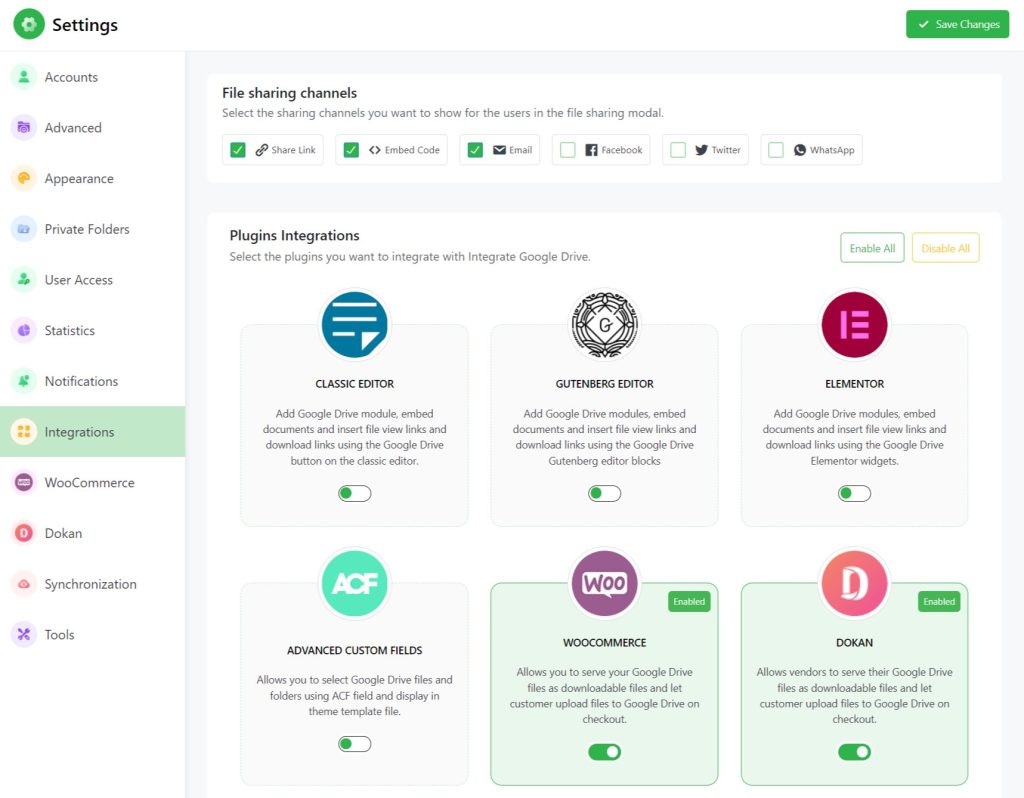
Step-3: Enable Dokan Uploads
To enable Dokan uploads, navigate to Google Drive > Settings > Dokan > Enable Uploads > Save Changes.
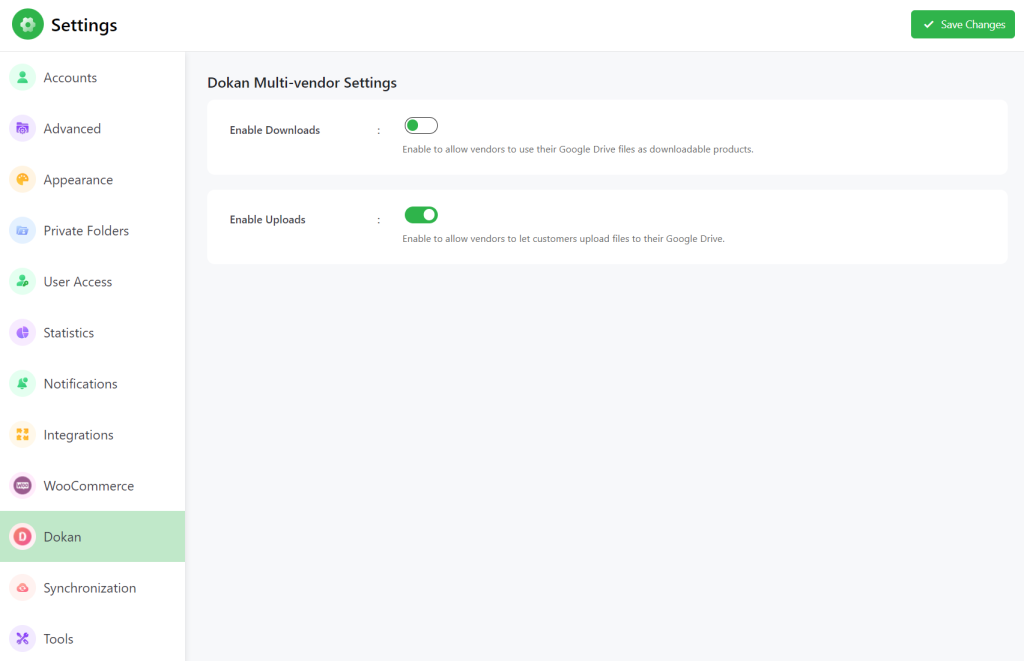
Step-4: Setup Upload Option Display Location
To set up the upload option display location you have to login inside the Dokan Vendor dashboard > Settings > Google Drive > Upload Settings.
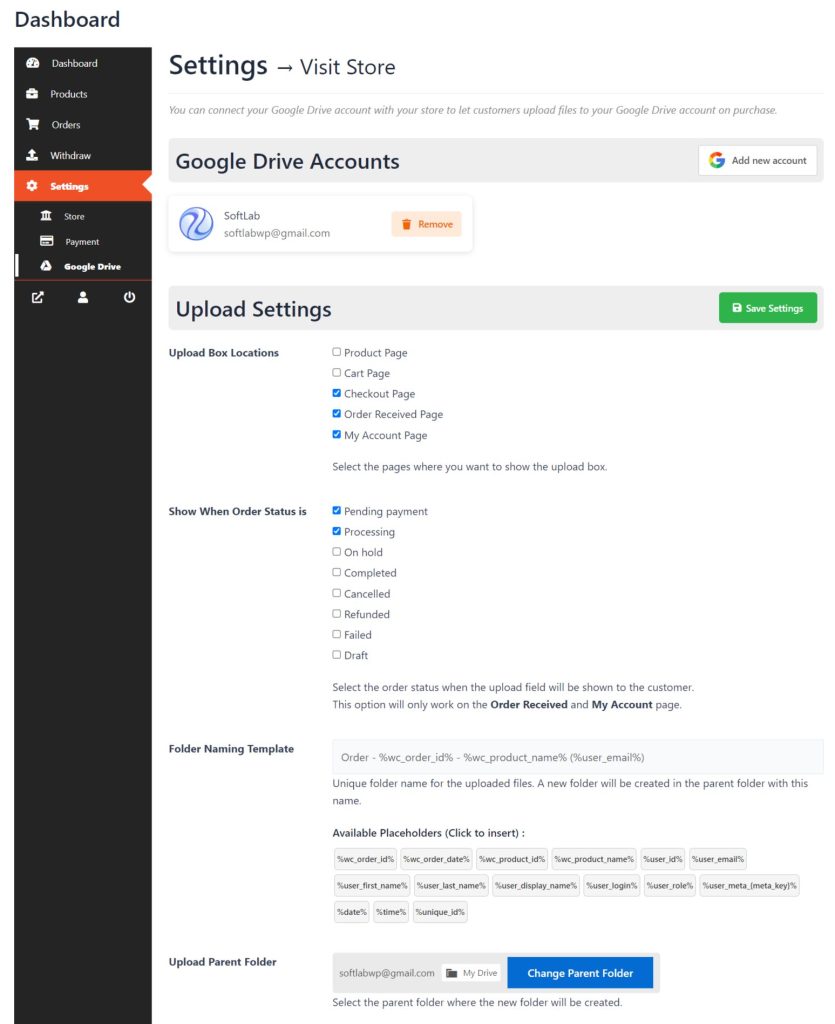
Upload Box Locations
You can fix or restrict to display upload box on a specific location to be allowed to upload files. You have to select the locations where you want to show the upload box in WooCommerce products.
- Product Page
- Cart Page
- Checkout Page
- Order Received Page
- My Account Page
Show Upload Box Based on Order Status
Select the order statuses when you want to show the upload box. These options will only work on the Order Received and My Account page.
- Pending Payment
- Processing
- On Hold
- Completed
- Canceled
- Refunded
- Failed
Folder Naming Template: Set the upload folder naming template when a customer uploads a file a new folder will be created with this name.
Upload Parent Folder: Select the parent folder where the new folder will be created.
Step-5: Add New Product
To add new products log in as Vendor inside the Dokan dashboard > navigate to Products > Add New Product > Give a product name & other necessary information > click Create Product.
Under the permalink check the Uploadable type. After enabling the uploadable option you will discover a new tab Uploadable Options
From the uploadable options tab check Upload to Google Drive. Now you will discover a few customization options:
- Upload Button Text: Enter the text you want to display on the upload button.
- Upload Description: Enter the description you want to display for the upload box.
- Upload Folder Name: Unique folder name for the uploaded files. A new folder will be created in the parent folder with this name. You can use available placeholders (%order_id%, %order_date%, %product_id%) to customize the new folder name.
- Allowed File Types: Enter the allowed file extensions separated by a comma (e.g: png, jpg). Leave blank to allow all file types.
- Max File Size: Enter the maximum file size in MB. Leave blank to allow all file sizes.
- Parent Folder: Select the parent folder where the new folder will be created.
Now select the order status to display the upload button and publish the post > Save Product.
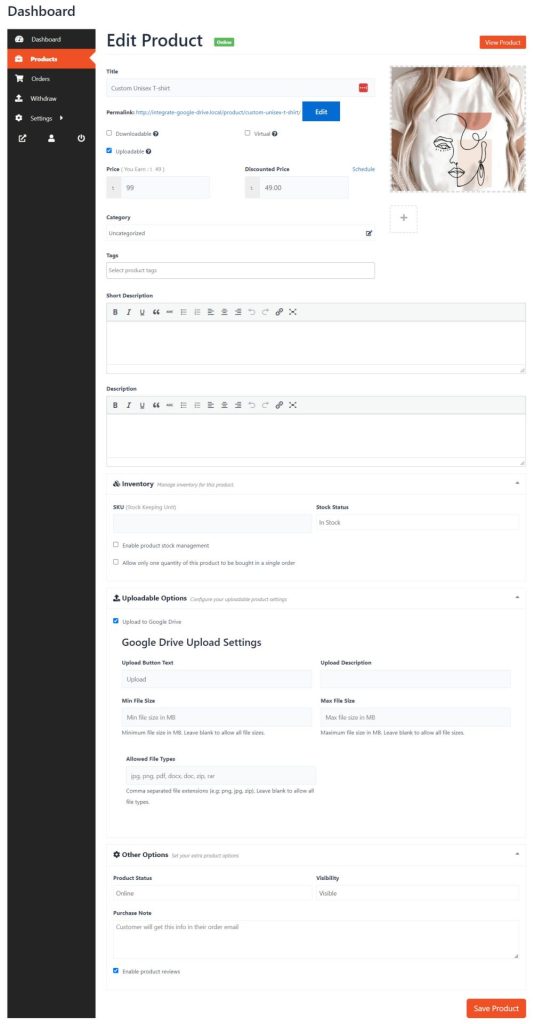
Step-6: Upload Files
Once the order is placed now customers can upload files from the thank you page. By clicking on the upload button > browse files > select the files.
Now uploaded files will be uploaded to Google Drive in the selected folders. This is how your customers can upload any kind of file while purchasing any uploadable product, which will be stored in your Google Drive account.
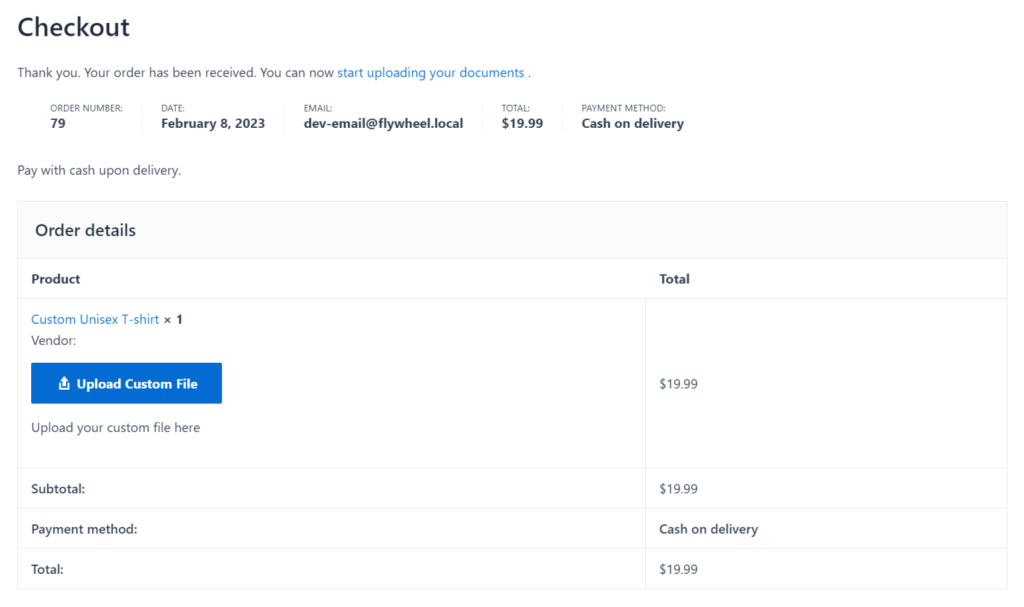
Step-7: View Customer-Uploaded Files
Once the customer uploads files you can track them from Dokan Vendor Dashboard > Order view page and view their uploaded files.
You can also check uploaded files directly on your Google Drive selected folder.
Read Also: Allow vendors to serve digital downloads directly from Google Drive
Video Tutorial